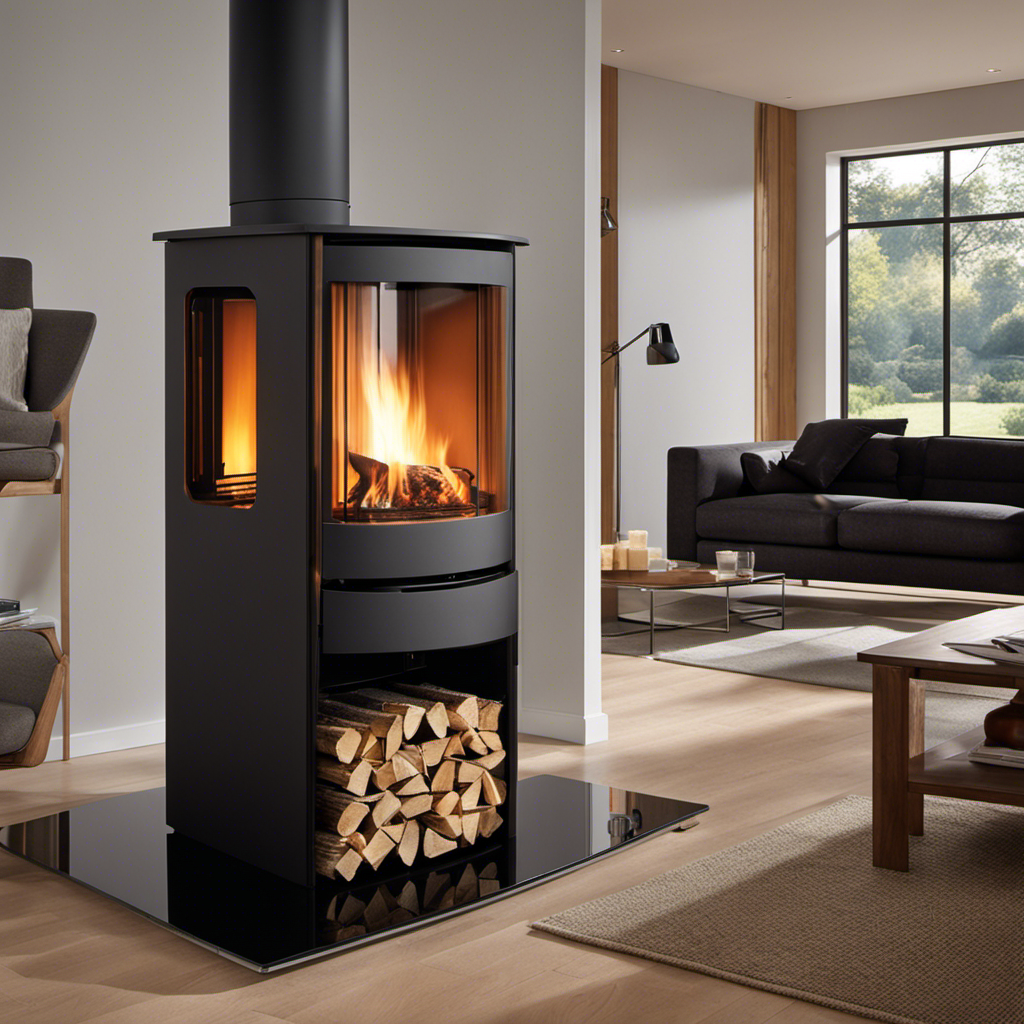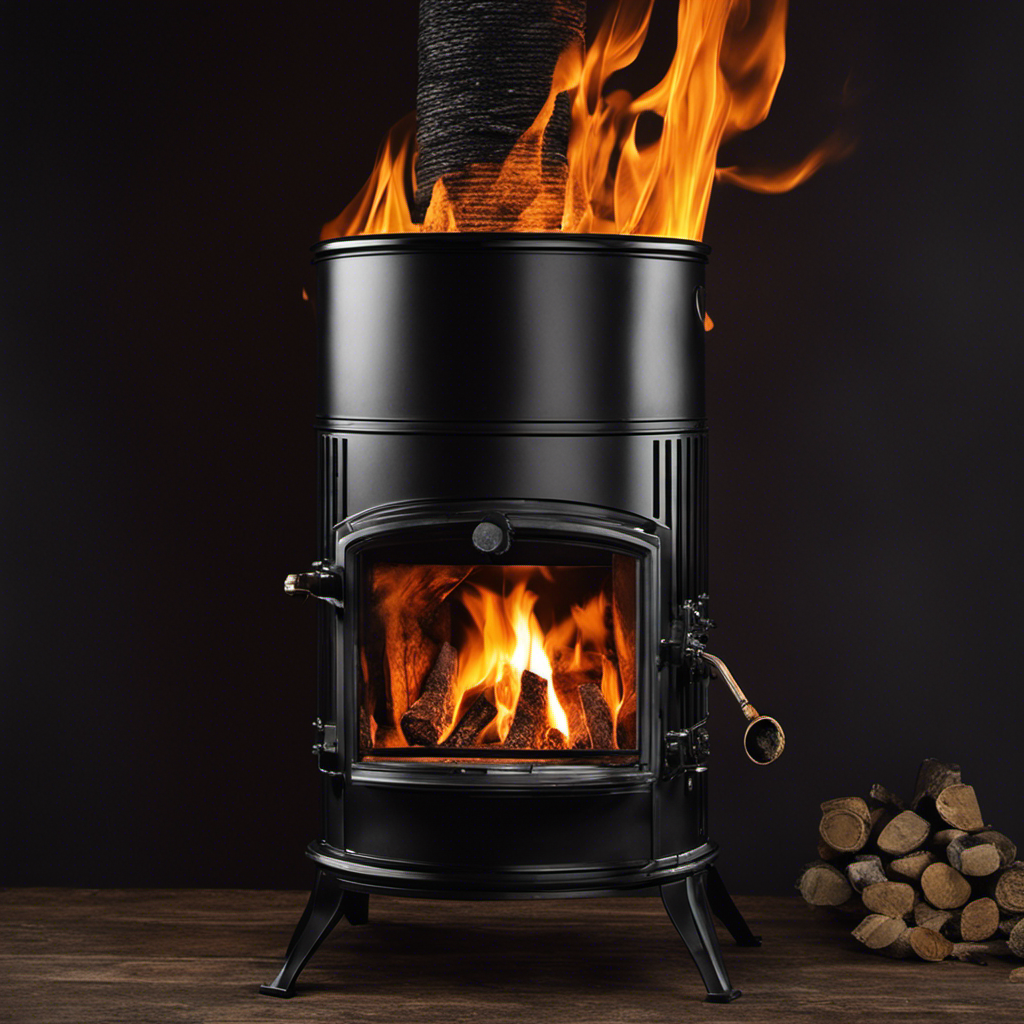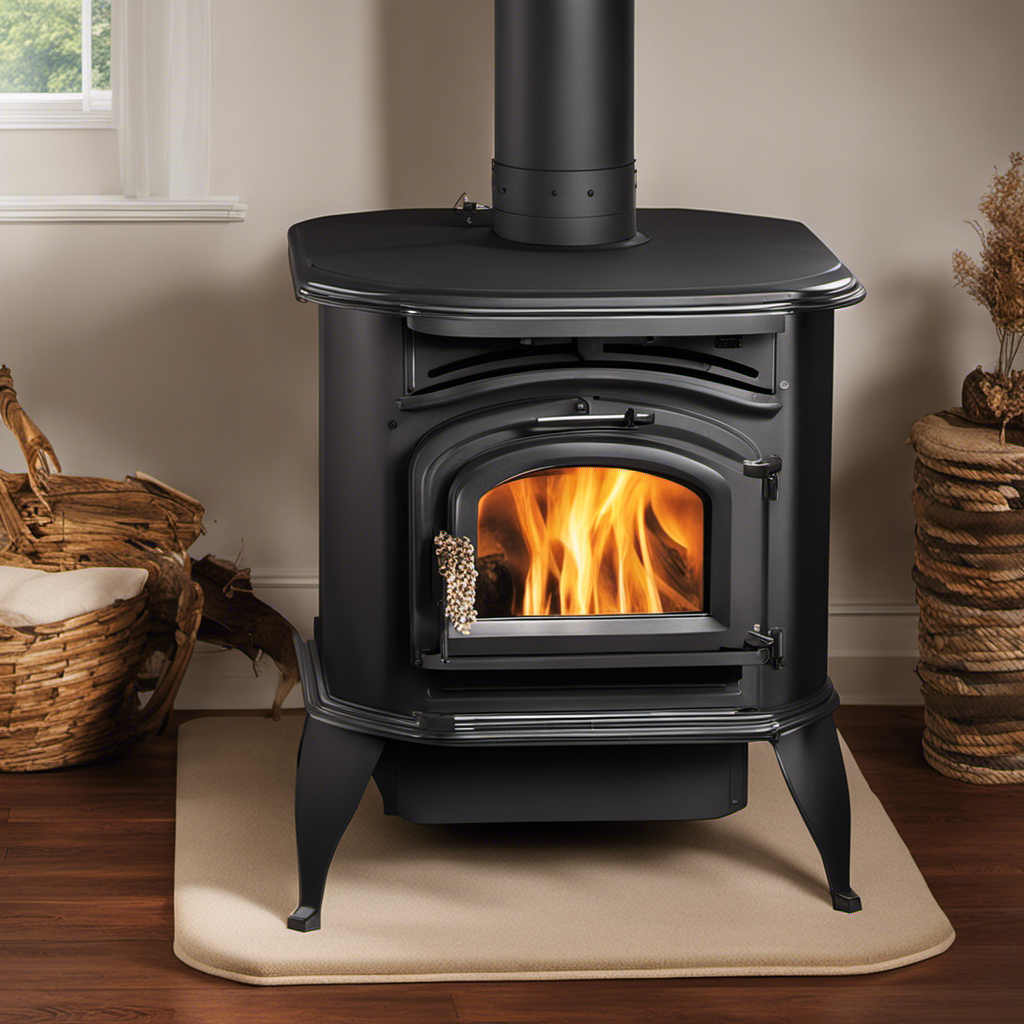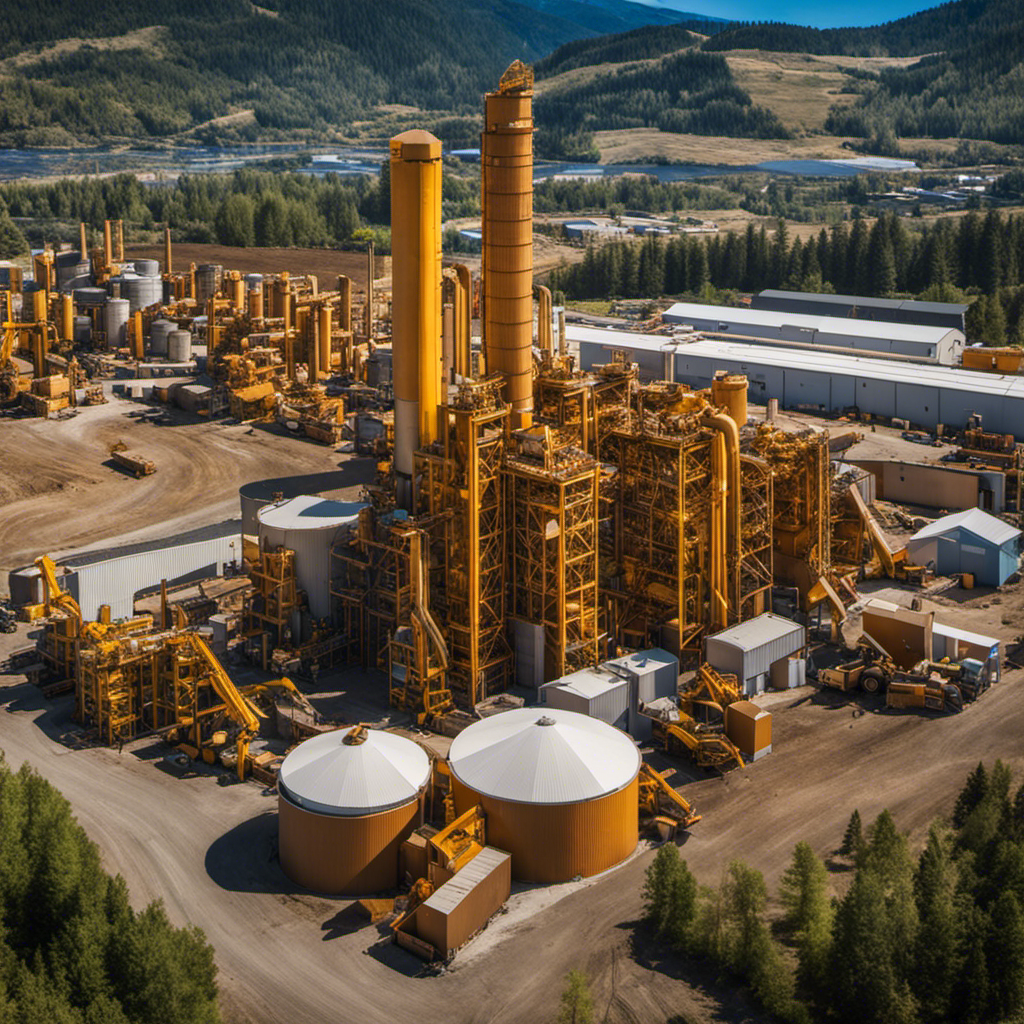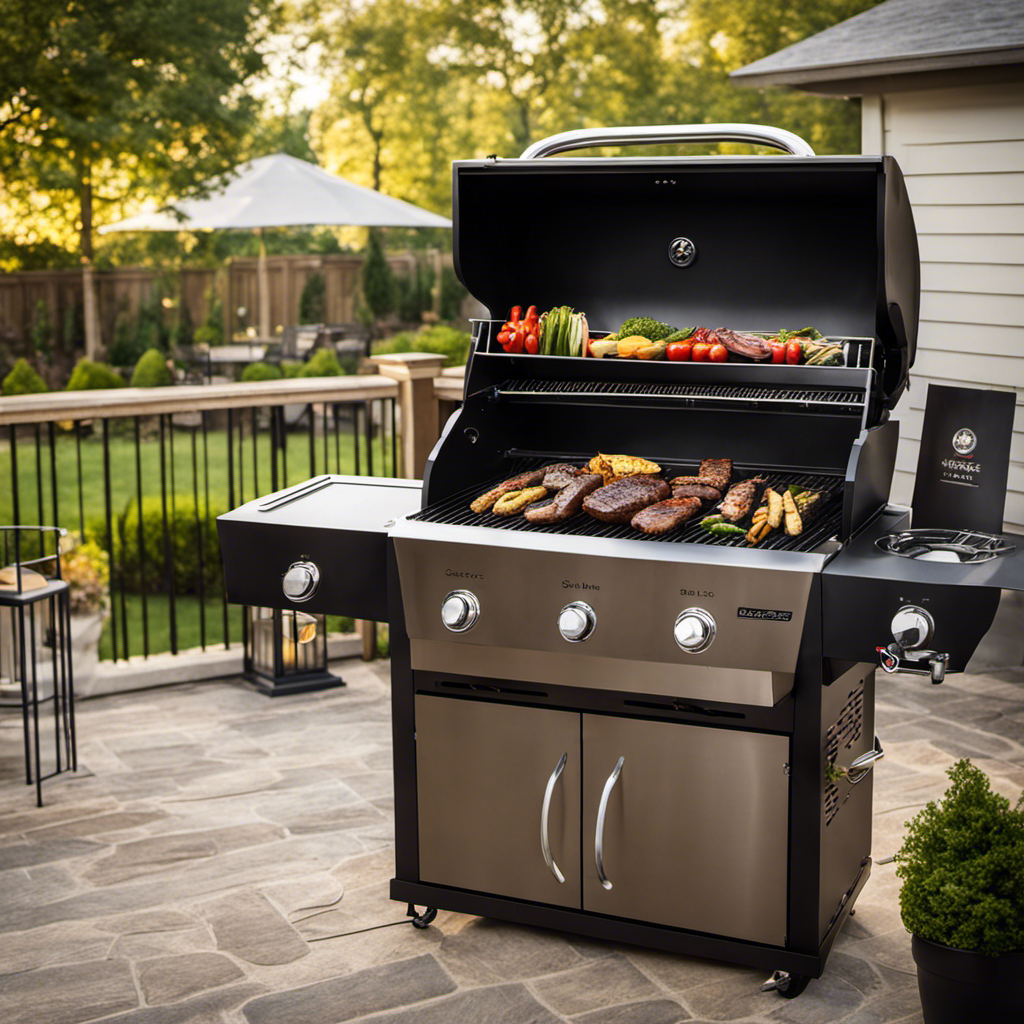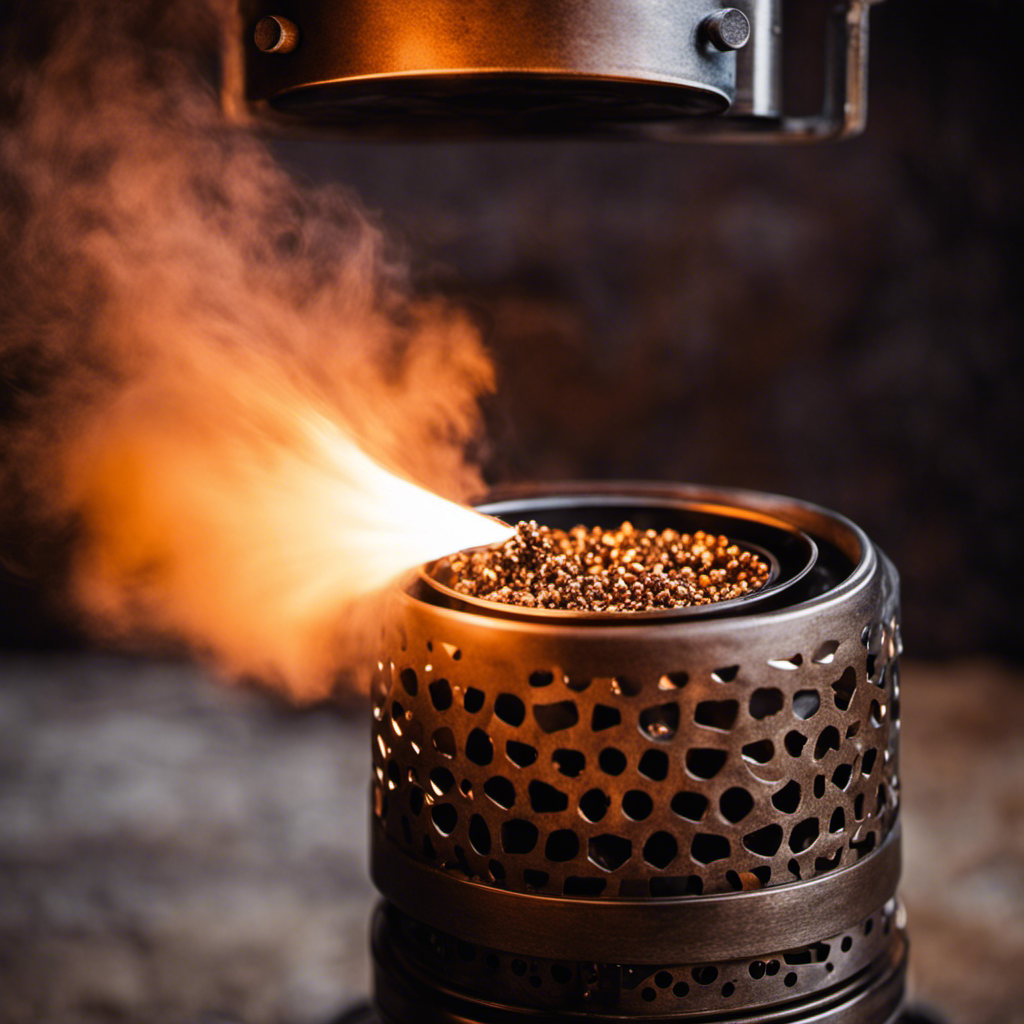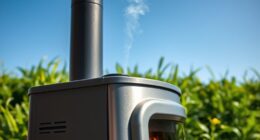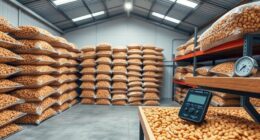Are you fed up with enduring the chill of winter evenings? Multi-fuel stoves may be the answer to keeping warm. In this article, we’ll delve into how these adaptable warming units can utilize different types of fuel, like coal, peat, and wood pellets, ensuring your comfort.
With their sturdy design, multi-fuel stoves convert up to 70%-80% of fuel energy into heat, providing maximum warmth per unit consumed. Discover the innovative features and environmental benefits of these incredible devices.
Join us as we unleash the heat and transform your living space.
Key Takeaways
- Multi-fuel stoves can burn a variety of fuels including coal, peat, and wood pellets.
- They provide more heat per unit of fuel consumed and have higher efficiency compared to open fireplaces.
- Multi-fuel stoves allow for manual control of airflow and retain heat even after the fire has gone out.
- To determine if a stove is multi-fuel, look for a grate at the bottom, an ash pan compartment, an additional air vent, and compare its design and features with wood-burning stoves.
The Versatility of Multi-Fuel Stoves
One of the advantages of multi-fuel stoves is that they can burn a variety of fuels, including coal, peat, and wood pellets. This versatility sets them apart from traditional fireplaces, which are typically limited to burning wood.
Multi-fuel stoves offer homeowners the flexibility to choose the most cost-effective and readily available fuel source. Compared to traditional fireplaces, multi-fuel stoves provide higher efficiency, converting up to 70%-80% of the energy in the fuel to heat. This means that less fuel is needed to generate the same amount of heat, resulting in cost savings.
Additionally, multi-fuel stoves allow for manual control of airflow, allowing users to regulate the fire and heat production.
Overall, the advantages of multi-fuel stoves make them a practical and efficient choice for heating homes.
Maximizing Efficiency With Multi-Fuel Stoves
To get the most out of our multi-fuel stove, we can adjust the vents to regulate airflow and maximize efficiency.
Improving combustion is key to optimizing burn efficiency. By carefully adjusting the vents, we can control the amount of oxygen that reaches the fire, ensuring a clean and efficient burn. This helps to minimize waste and maximize the heat produced from the fuel.
Additionally, enhancing heat distribution is crucial for maximizing warmth output. We can achieve this by strategically placing heat-resistant materials, such as bricks or tiles, around the stove to absorb and radiate heat. This helps to evenly distribute warmth throughout the space, making our multi-fuel stove a more efficient and effective source of heat.
Exploring Alternative Fuels for Multi-Fuel Stoves
When researching alternative options for our multi-fuel stove, we found that wood pellets and peat are viable fuel choices. Wood pellets are small, cylindrical pieces made from compressed sawdust or other wood waste. They have a high energy density and burn efficiently, producing minimal ash and emissions. Peat, on the other hand, is a natural fuel source consisting of partially decomposed organic matter found in wetland areas. It has a higher moisture content compared to wood pellets, but it still provides a steady and long-lasting heat output. Both wood pellets and peat are considered alternative fuel sources that offer efficient heating options for multi-fuel stoves. By incorporating these fuels into our stove, we can maximize heat production while minimizing our environmental impact.
| Fuel Source | Characteristics | Benefits |
|---|---|---|
| Wood Pellets | High energy density, minimal ash and emissions | Efficient and clean burning |
| Peat | Steady and long-lasting heat output | Alternative fuel choice with minimal environmental impact |
Unleashing the Heat: How Multi-Fuel Stoves Generate More Warmth
As we explore the inner workings of these versatile appliances, we discover how they efficiently generate and distribute warmth throughout our home.
-
Maximize heat output: Multi-fuel stoves are designed to extract the maximum amount of heat from the fuel they burn. This is achieved through features like secondary combustion, which burns off waste gases and increases efficiency.
-
Maintenance tips: To ensure optimal performance, regular maintenance is essential. Clean the stove regularly to remove ash and soot buildup, as this can hinder heat transfer. Inspect the fire bricks and replace any damaged ones to maintain proper insulation. Don’t forget to check and clean the chimney or flue regularly to prevent blockages and improve airflow.
The Science Behind the Power of Multi-Fuel Stoves
Understanding the scientific principles behind how these versatile appliances efficiently generate and distribute warmth is fascinating. Multi-fuel stoves offer numerous advantages over traditional fireplaces, particularly in terms of heating efficiency. Compared to open fireplaces, multi-fuel stoves can convert up to 70%-80% of the energy in the fuel to heat, providing more heat per unit of fuel consumed.
The key to their efficiency lies in the design features and control mechanisms they incorporate. These stoves have a metal grate at the bottom to facilitate the effective burning of coal, an ash pan compartment for collecting and removing ashes, and an additional air vent for proper combustion. By adjusting the vents, users can regulate airflow and optimize heat production.
Furthermore, multi-fuel stoves retain heat even after the fire has gone out, ensuring a consistent source of warmth.
Mastering Control: Adjusting Airflow in Multi-Fuel Stoves
By adjusting the vents, we can optimize the airflow in multi-fuel stoves to control the heat production. This is crucial in achieving efficient and effective heat distribution.
Here are three key techniques for adjusting airflow in multi-fuel stoves:
-
Vent Positioning: By opening or closing the vents, we can regulate the amount of oxygen that enters the stove. This directly affects the combustion process and heat output.
-
Damper Control: Adjusting the damper allows us to control the intensity of the fire. By reducing the airflow, we can decrease the heat produced, while opening it up increases heat production.
-
Secondary Air Intake: Some multi-fuel stoves have a secondary air intake, which enables the combustion of waste gases. By adjusting this intake, we can optimize the burning process and enhance heat distribution.
The Long-Lasting Heat of Multi-Fuel Stoves
Our homes stay warm for extended periods of time with the long-lasting heat provided by multi-fuel stoves. These stoves offer several economic advantages, such as increased fuel efficiency and cost savings.
Compared to open fireplaces, multi-fuel stoves can convert up to 70%-80% of the energy in the fuel to heat, making them a more efficient heating option. This higher efficiency means that less fuel is needed to generate the same amount of heat, resulting in reduced fuel consumption and lower heating costs.
Additionally, multi-fuel stoves burn off waste gases through secondary combustion, leading to cleaner indoor air quality. By properly regulating airflow, these stoves minimize the release of pollutants into the air, creating a healthier environment for you and your family.
Overall, multi-fuel stoves provide long-lasting heat while offering economic benefits and improving indoor air quality.
The Environmental Benefits of Multi-Fuel Stoves
When it comes to heating our homes, we all want to make choices that aren’t only efficient but also environmentally friendly. That’s where multi-fuel stoves come in. These versatile heating devices offer a range of environmental benefits that make them an excellent sustainable heating option.
Here are three key advantages of multi-fuel stoves:
-
Reducing Emissions: Multi-fuel stoves are designed to burn a variety of fuels, including wood, coal, and wood pellets. By burning these fuels efficiently, they minimize harmful emissions such as carbon monoxide and particulate matter. This reduction in emissions helps improve air quality and reduces our carbon footprint.
-
Sustainable Heating Options: With the ability to burn various types of fuel, multi-fuel stoves provide flexibility and access to sustainable heating options. By utilizing renewable resources like wood pellets, we can reduce our reliance on fossil fuels and contribute to a more sustainable future.
-
Energy Efficiency: Multi-fuel stoves are highly efficient in converting fuel energy into heat. Unlike open fireplaces, which can lose a significant amount of heat through the chimney, multi-fuel stoves retain heat and distribute it effectively throughout the room. This efficiency translates into lower fuel consumption and reduced energy waste.
Unlocking the Potential: Converting Wood-Burning Stoves to Multi-Fuel
Converting wood-burning stoves to multi-fuel opens up new possibilities for efficient and versatile heating. With the right techniques and maintenance tips, you can unleash the full potential of your stove. Here are some key points to consider:
| Converting Techniques | Maintenance Tips |
|---|---|
| Consult a professional | Clean the stove regularly |
| Install a conversion kit | Inspect and replace worn parts |
| Adjust air vents for different fuels | Remove ash buildup |
| Test the stove with various fuels | Check the condition of the door gasket |
| Follow manufacturer’s instructions | Ensure proper ventilation |
How Do Pellet Stoves Compare to Multi-Fuel Stoves in Terms of Heat Output?
When comparing the heat output of pellet stoves and multi-fuel stoves, the truth about pellet stoves is that they are generally more efficient at producing heat. This is due to the uniform size and shape of the pellets, which allows for a consistent and controlled burn, resulting in higher heat output.
Are Multi-Fuel Stoves More Efficient and Cost-Effective Than Pellet Stoves?
Multi-fuel stoves offer versatility and can burn a variety of fuels, making them a cost-effective option. However, powerful pellet stoves efficiency is hard to beat, as they burn compressed wood pellets with high efficiency, providing consistent heat output and reducing fuel waste.
Frequently Asked Questions
Can Multi-Fuel Stoves Be Used for Cooking as Well?
Yes, multi-fuel stoves can be used for cooking as well. Their cooking versatility makes them a practical choice for outdoor enthusiasts and those living off-grid.
With the ability to burn various fuels like wood, coal, and pellets, these stoves offer fuel efficiency and consistent heat output. They’ve features like adjustable vents and grates that facilitate efficient cooking.
Are Multi-Fuel Stoves Suitable for Use in Small Spaces or Apartments?
Yes, multi-fuel stoves are suitable for use in small spaces or apartments. Their compact size and efficient design make them a great heating option for limited spaces.
Multi-fuel stoves offer high efficiency, converting a higher percentage of fuel energy into heat compared to open fireplaces.
When installing a multi-fuel stove in a small space, it’s important to follow the manufacturer’s guidelines to ensure proper ventilation and safety. These guidelines will help maximize the stove’s efficiency and provide a reliable source of heat.
How Often Should the Ash Pan in a Multi-Fuel Stove Be Emptied?
Emptying the ash pan in a multi-fuel stove is crucial to maintain optimal performance. The frequency of emptying depends on factors like usage and type of fuel used.
It’s like tending to a garden, ensuring that the soil is fertile for growth.
Ash disposal methods vary, but it’s important to handle it safely and responsibly.
Regular maintenance and proper ash disposal contribute to the longevity and efficiency of your multi-fuel stove, allowing it to unleash its full heating potential.
Can Multi-Fuel Stoves Be Used as a Primary Heat Source for an Entire Home?
Multi-fuel stoves can be used as a primary heat source for an entire home. Compared to traditional heating systems, multi-fuel stoves offer several benefits for off-grid living.
They provide more heat per unit of fuel consumed and have higher efficiency, converting up to 70%-80% of the energy in the fuel to heat. With manual control of airflow, they offer a consistent source of heat and retain heat even after the fire has gone out.
Are There Any Safety Considerations or Precautions to Keep in Mind When Using a Multi-Fuel Stove?
Safety considerations and precautions should be kept in mind when using a multi-fuel stove. It’s essential to ensure proper ventilation to prevent the buildup of harmful gases like carbon monoxide. Regular cleaning and maintenance of the stove, including the flue and chimney, are crucial to prevent the risk of fire.
It’s important to follow the manufacturer’s instructions for fuel loading and to use the appropriate fuel for the stove. Additionally, installing carbon monoxide detectors and having a fire extinguisher nearby are recommended for added safety.
Conclusion
In conclusion, multi-fuel stoves offer a reliable and efficient heating solution for your home. Their innovative design and ability to burn a variety of fuels make them versatile and cost-effective.
With their high energy conversion rate and cleaner emissions, these stoves provide warmth while also promoting a safer environment.
Say goodbye to chilly nights and unleash the power of multi-fuel stoves to transform your living space into a cozy and comfortable haven.
Growing up surrounded by the vast beauty of nature, Sierra was always drawn to the call of the wild. While others sought the comfort of the familiar, she ventured out, embracing the unpredictable and finding stories in the heartbeat of nature.
At the epicenter of every remarkable venture lies a dynamic team—a fusion of diverse talents, visions, and passions. The essence of Best Small Wood Stoves is crafted and refined by such a trio: Sierra, Logan, and Terra. Their collective expertise has transformed the platform into a leading authority on small wood stoves, radiating warmth and knowledge in equal measure.

